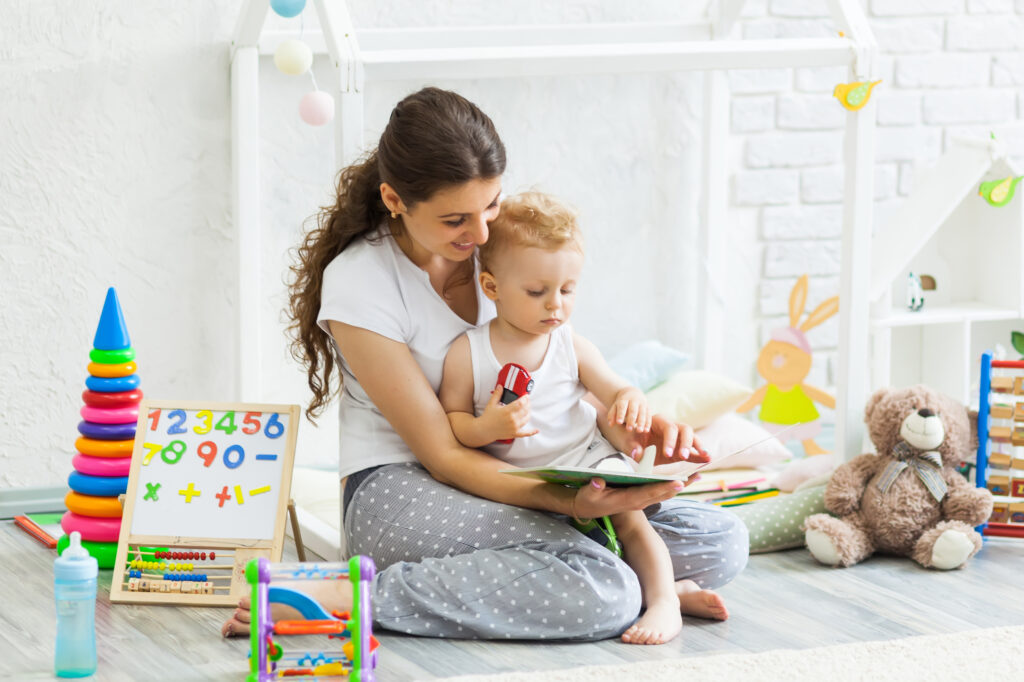Follow Your Child’s Lead and Promote Language

Children learn to communicate gradually by spending time with the various people in their lives. Communication is two people sending messages to one another. This form of communication might be in different forms, including body language, gestures, signs, simple sounds, babbling, words, or vocalizations closely approximating words. Children learn these forms of communication from observing others. They are more likely to be engaged and motivated to communicate when the activity or topic of conversation interests them. Follow your child’s lead to increase their interest in communicating with you.
Following your child’s lead is simple. When they are playing, join in and play with them. Even if they are not interacting with you, imitate their play. If they are banging toys together, bang toys together alongside them. If this attracts their attention, they might hit their toys together again and wait for you. An interaction has begun!
Another way to gain a child’s attention is to use fun sounds and words. Examples include:
- “Vroom vroom” or “Beep beep” when playing with cars
- “Chugga chugga choo choo” when playing with trains or when you see a train while driving
- “Pop” when playing with bubbles
- Animal sounds when playing with animal toys
Simple Actions to Follow Your Child’s Lead
- Imitate – Do what your child does. If they bang their hands on the floor, you hit your hands on the floor. If they make a babbling sound, you make the babbling sound too. Imitating lets your child know you are interested in their actions and sounds.
- Interpret – Observe what your child may be trying to communicate, and interpret it in a simple phrase. If your child points to the candy cupboard, it is obvious what they are trying to communicate to you. Put this communication into words for them by saying, “You want candy.” This model will help your child learn to say those words eventually.
- Make a comment – Use short, grammatical sentences to comment on what’s happening throughout the day. For example, if you’re driving and hear a train, you could say, “I hear the train. The train is loud.”
- Follow through – When your child makes a request, it is important to follow through so they know that their communication has an effect. For example, if your child hands you their shoe, imitate their words with correct pronunciation or interpret by commenting and helping them put their shoe on. If the request is unreasonable, let your child know you understand and explain why they can’t get what they want. For example, “I know you want candy, but we can’t eat that right now.”
Three Comments to Every Question
It is natural to ask a question when we want to communicate with one another. Still, in general interactions, we don’t usually ask someone five questions in a row. Subsequent questioning can cause a child to shut down and disengage in a communication interaction. Accept the challenge to give at least three comments to every question you ask your child. Remember, if you are commenting on a child’s interest, they are probably listening intently. They may look at you or communicate back to tell you they heard you. For more tips on increasing communication, check out Is My Child Ready to Start Talking?
References
- It Takes Two to Talk: A Practical Guide for Parents of Children with Language Delays, Elaine Weitzman
